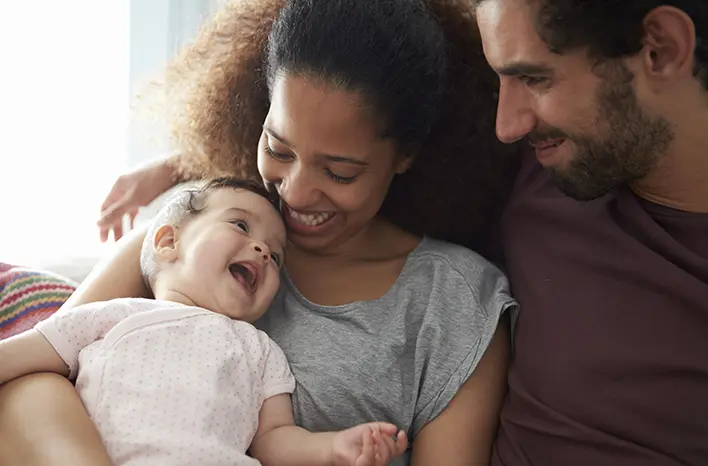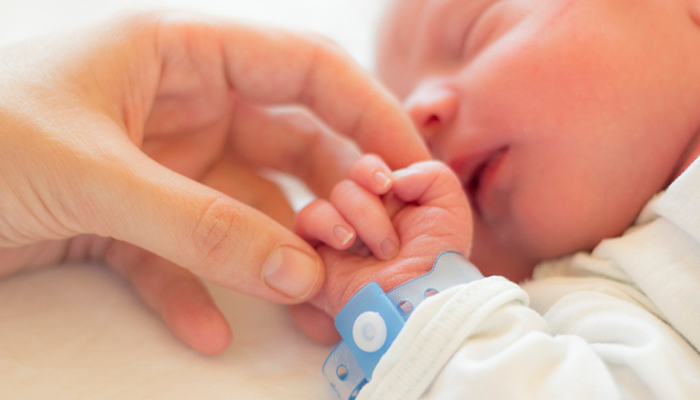An adoption is a beautiful option, not only for a woman faced with an unplanned pregnancy but also for families who desire to raise a child. Although every adoption process is as unique, there are a few things that tend to be routine. Whether you are interested in adoption or looking to learn more, here is a brief introduction to the adoption process.
Types of Adoption
The first step is to decide what type of adoption you are interested in. In the United States, there are three types of domestic adoptions: closed, semi-open, and open.
Closed Adoption
A closed adoption is the most private. The birth mother desires privacy and will not want contact with the adoptive family or the child.
Semi-Open Adoption
A semi-open adoption is not entirely as private as a closed one. The birth mother does retain a distance from the adoptive family. She may want to receive updates about the child through her lawyer or agency. She might also remain connected by doing things like sending birthday gifts to the child. Although the relationship is distant.
Open Adoption
Open adoption is the most unique of the three because the level of closeness between the adoptive family and the birth mother can vary significantly. In some cases, the birth mother or birth parents may become almost like members of the adoptive family. There is often regular contact through phone calls, emails, texts, and in-person visits. The birth mother is usually an active influence in the child’s life.
The type of adoption you are hoping for your family will likely influence whether you go through an adoption lawyer or an adoption agency. Both can be good options, but there are some distinct differences. A lawyer is more likely to help with closed adoptions, while an agency will be more likely to offer semi-open or open adoptions. Furthermore, an agency will usually offer more care for the birth mother, both before and after the birth of the child. A lawyer will most likely offer more privacy.

Step-by-Step Adoption Process
The first step toward adoption is submitting a pre-application to your lawyer or agency of choice. This means that you will be considered but are not guaranteed acceptance. If your pre-application is accepted, you can move on to the actual application process.
Applying to adopt is a lengthy process and full of lots of paperwork. Nevertheless, your lawyer or agency will walk with you every step of the way but prepare for a long process. There are many forms to be filled out, family history to be researched, interviews to be conducted, letters of recommendation to be collected and filed, etc. The application process usually finishes with a home study. The agency or lawyer will send someone to your home with two purposes in mind. The first is to ensure the home is ready to receive a child (that safety measures are in place, there is a room for the baby, etc.) The second is to meet you in person and ensure that your family truly is a good candidate for welcoming a child.
After the family passes the home study they are approved for adoption and the matching process begins. The agency will probably ask you to make a “profile book”. This is a photo album showing your family, providing basic information about yourselves, why you want to adopt, and giving a taste of what sort of life you would be offering the child. A birth mother is usually presented with 3-5 profile books to see if she connects with any of them.
Once an adoptive family matches with the birth mother, the legal adoption process begins. Each state has different laws surrounding adoption. Your lawyer or agency will be there to help you navigate the process. Despite the red tape, it can often feel like a whirlwind. Agencies usually wait until a birth mother is further along in her pregnancy to contact a family, so once matched, a family may meet their baby in as little as 5-6 weeks.
Adopting will require not only a lot of time and energy but also significant finances. Domestic adoption can cost up to $50,000. Each step of the process (pre-application, paperwork forms, home study, etc.) is full of expenses that the adoptive family must cover. Fortunately, there are many grants available. A family can begin applying for them as soon as they pass the home study. Agencies will be a big help in finding applicable grants. These funds can help to decrease a family’s financial burden dramatically.
Choosing an Agency
If you want to go with an agency for your adoption, we recommend doing a quick internet search on agencies local to your area. Smaller agencies will focus on families and birth mothers in your area and offer a more personal experience. But there are also many national agencies that have been around for decades, bringing more experience to their adoptive families. A couple of national Christian agencies are Lifetime Adoption Center and Nightlight Christian Adoptions.

A bit of friendly advice to families interested in adoption is to educate yourself. Not only about the adoption process, but also about parenting an adopted child. While adoption is beautiful comes along with some unique challenges. When a baby separates from a birth mother it can be very difficult. Parenting an adopted child will require discernment, wisdom, and deep love. Growing in your understanding of what your child has experienced, even from birth, is an important way to show them that love. Two book recommendations on this topic are The Body Keeps Score: Brain, Mind and Body in the Healing of Trauma, and The Connected Child: Bringing Hope and Healing to Your Adoptive Family.
Being willing to provide a loving home to the child of an unplanned pregnancy is a beautiful testimony to the value of life. If you are considering adoption, we encourage you to reach out to local agencies and begin the process. Local agencies will off You may be the answer to a birth mother’s prayers.






